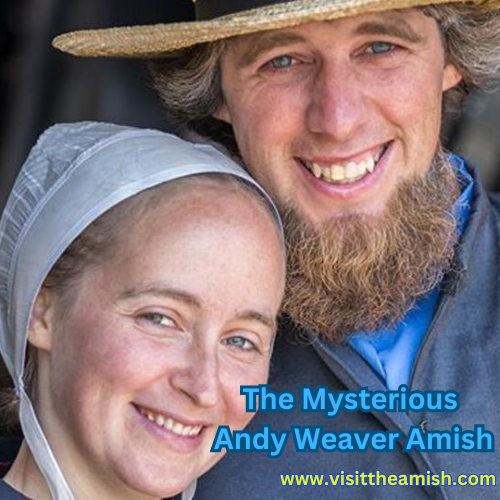A Taste of Authenticity: Discovering A Taste of Amish Deli in Bowling Green
Nestled in the heart of Bowling Green, Ohio, lies a hidden gem that transports visitors to the heart of Amish country – A Taste of Amish Deli. This unassuming eatery, located at 133 E Wooster St, offers a delightful culinary experience that celebrates the rich traditions and flavors of the Amish community.
A Warm Welcome to Amish Hospitality
As you step through the doors of A Taste of Amish Deli, you’re immediately enveloped in a warm and inviting atmosphere that reflects the Amish values of simplicity and hospitality. The aroma of freshly baked goods and savory meats wafts through the air, whetting your appetite for the delectable offerings that await.
The friendly staff, many of whom are members of the local Amish community, greet you with genuine smiles and a willingness to share their knowledge of the menu’s offerings. Their passion for preserving Amish culinary traditions is evident in every dish they serve.
A Feast for the Senses
At the heart of A Taste of Amish Deli’s menu lies a tantalizing array of deli sandwiches, each crafted with the utmost care and attention to detail. The BLT, a local favorite, is a testament to the deli’s commitment to using only the freshest ingredients, with crisp bacon, juicy tomatoes, and crisp lettuce nestled between slices of freshly baked bread[2].
For those seeking a heartier option, the Reuben sandwich is a must-try. Layers of tender corned beef, tangy sauerkraut, and creamy Swiss cheese are sandwiched between slices of rye bread, creating a flavor explosion that will leave you craving for more[2].
A Celebration of Amish Baked Goods
No visit to A Taste of Amish Deli would be complete without indulging in their delectable baked goods. From flaky pies to melt-in-your-mouth cookies, each treat is lovingly crafted using time-honored Amish recipes passed down through generations.
The deli’s selection of breads is a true highlight, with options ranging from hearty whole wheat loaves to sweet and buttery dinner rolls. These breads are baked fresh daily, ensuring that every bite is a delightful experience.
Based on the search results provided, A Taste of Amish Deli in Bowling Green, OH offers several unique Amish specialties on their menu that are worth trying:
- Amish Pies and Baked Goods
The deli is known for their delectable selection of Amish-style pies, breads, cookies and other baked goods made from traditional recipes passed down through generations. Some highlights include flaky fruit pies, hearty whole wheat breads, and melt-in-your-mouth cookies. - Homemade Cheese Balls
The deli offers a variety of homemade cheese balls, including some unique flavors. These cheese balls are made using Amish recipes and techniques, resulting in rich and creamy textures. - Amish Deli Meats and Cheeses
You can find a range of premium deli meats and cheeses made by local Amish producers. These include smoked meats, cured sausages, and artisanal cheeses reflecting the Amish culinary heritage. - Amish-Style Sandwiches
The deli menu features sandwiches made with their fresh-baked Amish breads and locally-sourced ingredients. Popular options include the Reuben, BLT, and other classic deli sandwiches with an Amish twist. - Amish Salads and Sides
In addition to sandwiches, they offer Amish-inspired salads and side dishes like coleslaw, potato salad, and pickled vegetables made using traditional Amish recipes and techniques.
While the menu may change seasonally, A Taste of Amish Deli prides itself on offering authentic Amish specialties that showcase the simplicity, quality, and time-honored traditions of the local Amish community’s cuisine.
A Glimpse into Amish Culture
Beyond the delicious food, A Taste of Amish Deli offers visitors a unique opportunity to immerse themselves in the Amish way of life. The deli’s shelves are lined with an array of Amish-made goods, from jams and preserves to handcrafted baskets and quilts.
Engaging with the friendly staff and learning about the Amish traditions and values that shape their culinary offerings is an enriching experience that will leave you with a deeper appreciation for this fascinating community.
A Taste of Authenticity in Bowling Green
Whether you’re a local resident or a visitor to Bowling Green, A Taste of Amish Deli is a must-visit destination for anyone seeking an authentic taste of Amish cuisine and culture. With its warm hospitality, delectable offerings, and commitment to preserving traditions, this hidden gem promises to leave a lasting impression on all who visit.
So, the next time you find yourself in Bowling Green, make sure to stop by A Taste of Amish Deli and savor the flavors of a community that values simplicity, quality, and a deep connection to their culinary roots.
Citations:
[1] https://foursquare.com/v/a-taste-of-amish/4d110ca7e2365481dd937bea
[2] https://www.yelp.com/biz/a-taste-of-amish-deli-bowling-green-4
[3] http://places.singleplatform.com/a-taste-of-amish-deli-0/menu
[4] https://www.mapquest.com/us/ohio/a-taste-of-amish-deli-448175132
[5] https://us.nextdoor.com/pages/a-taste-of-amish-deli-bowling-green-oh-1/








































